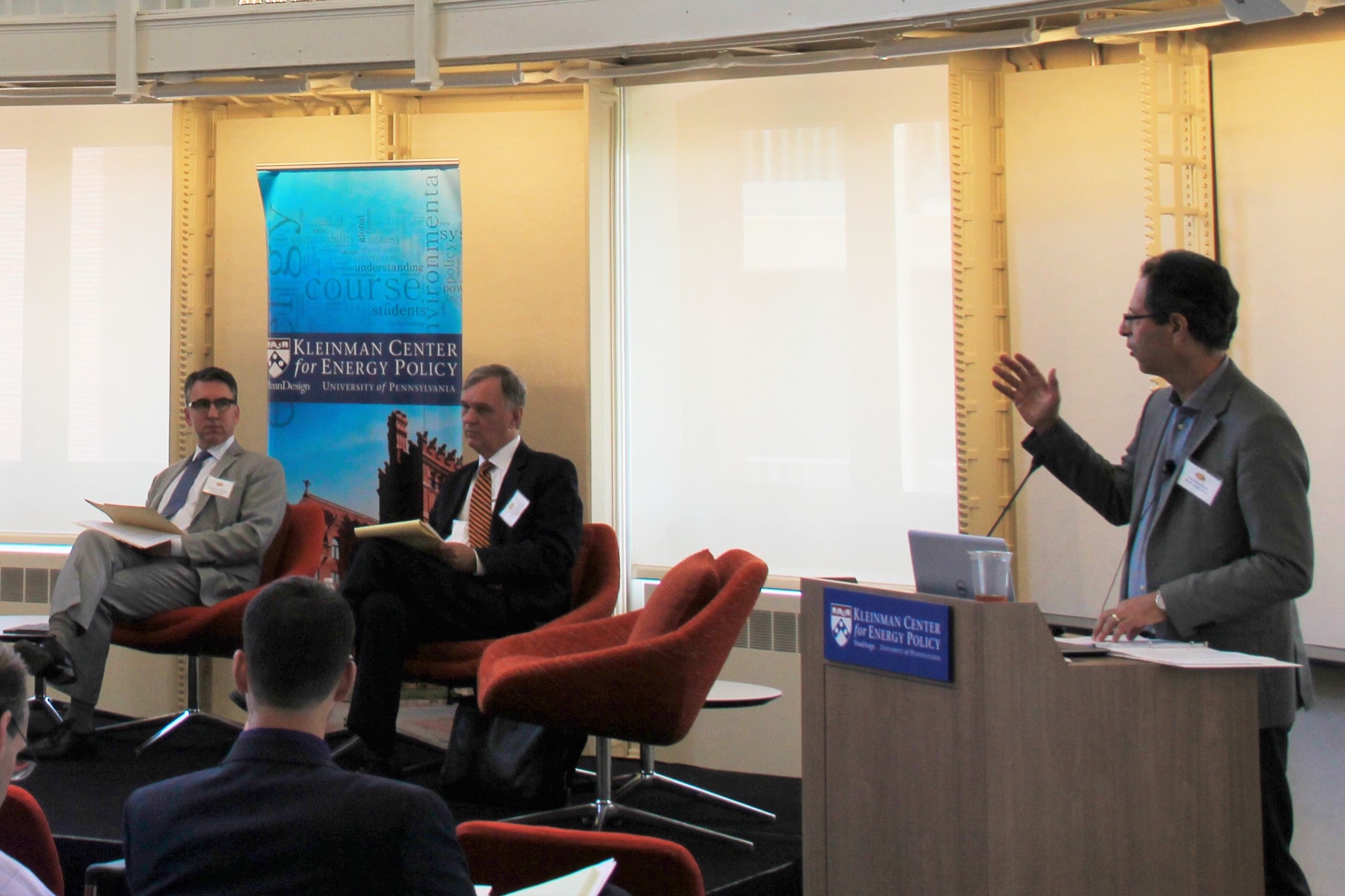
Penn’s Kleinman Center for Energy Policy convenes energy policy roundtable.
In the wake of policy developments such as the Paris Agreement and the Clean Power Plan, carbon emissions—and the sources of those emissions—have received increased domestic and international attention. Perhaps now more than ever, policymakers and industry experts are grappling with the question of whether it is possible to harmonize market concerns such as price and reliability with policy concerns like reducing carbon emissions in the interest of environmental protection.
To this end, energy policy experts convened at the Kleinman Center for Energy Policy at the University of Pennsylvania earlier this year to discuss what role state regulation should play in an energy marketplace currently characterized by low commodity prices for electricity.
The Kleinman Center roundtable featured speakers from the Maryland Public Service Commission, Hanger Consulting, and PJM Interconnection (PJM), and focused on what role state regulation should play in the Pennsylvania, New Jersey, and Maryland energy markets.
PJM is one of several major regional operators of energy markets in the United States, and it functions as a neutral coordinator of a wholesale electricity market that serves the needs of 61 million customers in its region. Unlike some other regional operators, PJM manages its electricity market using an auction system in which generators—such as wind farms, coal plants, and natural gas plants—bid to produce electricity at the lowest possible cost.
Although the auction mechanism is designed to reward the most efficient and lowest-cost providers of electricity, it also serves an important signaling function for investors in future sources of energy. An auction in which renewable energy generators place the winning bids can encourage investment in these renewable resources, and divert investment away from coal and natural gas plants. Over time, these signals to investors can have long-term repercussions on public policy goals such as fuel diversity.
In opening the Kleinman Center roundtable, Chairman W. Kevin Hughes of the Maryland Public Service Commission outlined two major public policy goals of the state of Maryland: increasing energy efficiency and reducing energy demand. In 2008, Maryland enacted a law requiring utilities to increase energy efficiency and reduce per capita energy demand by 15 percent by 2015. Noting that most of the state’s utility companies had met these goals, Hughes affirmed the state’s commitment to reducing greenhouse gas emissions.
He further stated that, although the U.S. Supreme Court—in Hughes v. Talen Energy Marketing—had recently quashed a Maryland regulatory program designed to encourage the development of new in-state energy sources, the Court’s holding nonetheless confirmed that states have an important role to play in greenhouse gas reductions. The Court further affirmed, Hughes said, that the U.S. Federal Energy Regulatory Commission (FERC) alone has the power to set interstate wholesale rates for electricity, and that states may not intrude on this authority through local regulations.
Scott Hempling, a solo legal practitioner and expert in public utility regulation, also discussed Hughes as well as other cases in which states’ energy regulatory schemes have been rejected for intruding on the authority of FERC. Although energy markets in the United States are managed at a regional level by local operators such as PJM, they are also subject to FERC regulation in interstate electricity transmission and sales.
Hempling argued that the several state regulatory schemes which federal courts have recently held to be preempted by FERC all shared several characteristics. He cautioned states to be wary of factors that may cause courts to strike down state energy regulations.
Two other speakers at the Kleinman Center roundtable turned the discussion away from recent legal challenges to state regulatory schemes, and they addressed the current state of the energy market.
John Hanger, the President of Hanger Consulting, asserted that in spite of the recent spate of energy company bankruptcies, energy markets today are not “broken.” He further stated that such bankruptcies may ultimately offer a beneficial and creative destruction of capital if they spur competition in the energy industry. In support of his claim, he noted that market forces have contributed to lower electricity prices and a greater supply of cleaner, more efficient fuel—both positive results for the environment and the public interest.
Vincent Duane, the Senior Vice President and General Counsel of PJM Interconnection, discussed a recent PJM study on how efficiently the electricity market manages the entry and exit of energy resources compared to more highly regulated environments. The study concluded that PJM’s market manages entry and retirement about as efficiently as more regulated environments, indicating that—counter to initial expectations—the current market is not making more efficient decisions about the entry and exit of resources.
Duane also stated that, in line with the conclusions of the study, an efficient energy portfolio may not necessarily be the best portfolio, as it may result in an efficient price for consumers but fail to address wider environmental, social, and political concerns.
The roundtable also included speakers from Hudson Ridge Asset Management, UBS Securities, and Holland & Knight, who addressed the investment challenges that exist in today’s low commodity price environment.
The roundtable was moderated by Jonathan Raab, the President of Raab Associates. A video of the roundtable is available on a joint site hosted by Raab Associates and the Kleinman Center, with more information about the roundtable, as well as future events, available online.



